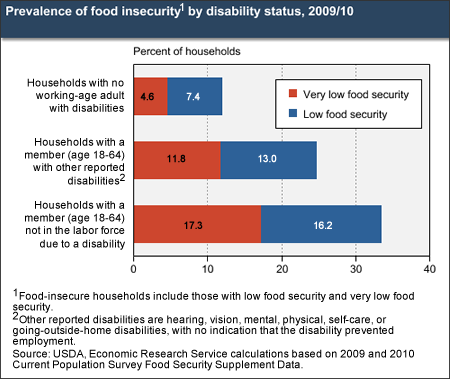Disability is an important risk factor for food insecurity
- by Alisha Coleman-Jensen and Mark Nord
- 1/11/2013

A new ERS study identifies disability as an important determinant of food insecurity. In 2009/10, about one in three U.S. households with an adult who was unable to work due to a disability were food insecure. Food-insecure households are those that lack consistent access to adequate food for one or more household members. Households that included adults with disabilities that did not prevent employment also had a relatively high prevalence of food insecurity; one-quarter of these households were food insecure. Twelve percent of households with no working-age adults with disabilities were food insecure. Reduced employment among persons with disabilities and high medical and other expenses associated with disabilities place these households at higher risk for food insecurity. This chart is from Food Insecurity Among Households with Working-Age Adults with Disabilities, ERR-144, released January 10, 2013.

